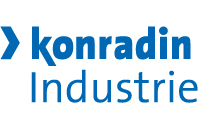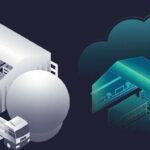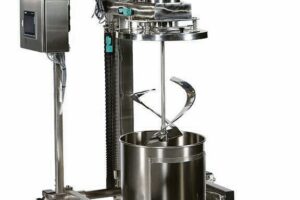How important is the topic of hydrogen for Siemens?
Axel Lorenz: Hydrogen is very important for Siemens. The rapidly increasing demand for clean energy sources makes hydrogen a key element in the energy transition. Its ability to store and transport energy in large quantities makes it particularly interesting for industries looking for sustainable alternatives to fossil fuels. In addition, green hydrogen diversifies the feedstock for industry with lower CO2 emissions. A large hydrogen ecosystem is growing worldwide, in which we want to be an important player. As a supplier of core components for electrification, automation and digitalization, our portfolio serves process OEMs, EPCs and end customers in the construction and operation of equipment modules or entire plants along the hydrogen value chain.
What can be done to accelerate the ramp-up of the hydrogen economy? Which technology do you see as particularly forward-looking?
Lorenz: To accelerate the ramp-up of the hydrogen economy, digital twins play a key role – virtual images of real systems that are updated in real time to model and optimize production facilities, transport infrastructures and storage systems for hydrogen. This technology makes it possible to simulate operating conditions, identify bottlenecks and predict maintenance requirements, leading to a significant increase in efficiency throughout the hydrogen value chain. At the same time, the intelligent use of renewable energy sources is crucial. Process control technology, the use of digital twins and AI-supported forecasting tools optimize energy production and use in this way, enabling seamless integration into the energy system. The development of the next generation of electrolyzers is another critical factor. AI-based design and simulation tools are driving innovation here, making electrolyzers more efficient and cost-effective and thus helping to scale up hydrogen production. Automation also plays an important role. It not only improves efficiency in the production, transport, and storage of hydrogen, but also helps to reduce costs and minimize safety risks. The use of sensors and IoT technologies, combined with advanced data analytics, optimizes operational processes, and enables predictive maintenance.
What components does Siemens offer for the hydrogen value chain?
Lorenz: Siemens has an extensive portfolio for the entire value chain of the hydrogen economy, especially for the automation and digitalization of production plants. This includes software for creating a digital twin for the process, production, operation, and maintenance: from plant design and simulation to engineering, control, and monitoring. Added to this is our entire portfolio for process control technology, process instrumentation and analytics, industrial communication, and energy management. In addition, Siemens develops smart grid solutions for hydrogen plants that facilitate integration with renewable energies and ensure the reliability of the plant‘s power supply. These include electrification, grid automation, use of the hydrogen plant for demand response programs, power quality and improved grid security.
How does Siemens support customers with their hydrogen projects?
Lorenz: We support our customers in all project phases: With financing, technical expertise, engineering services, digital tools, and consulting – from planning to commissioning and operation.
At what point does Siemens get involved in plant planning?
Lorenz: With Siemens Financial Services, we have a strong partner for project financing. It therefore makes sense to involve Siemens in projects as early as possible. In greenfield projects in particular, we are involved in the next step in the planning phase of plants and support our customers from the outset with our tools for simulations and digital planning in the optimization of process designs.
What tasks does the digital twin perform for the planning and operation of hydrogen plants?
Lorenz: Digital twins bring together data from all life cycle phases and from all functions and levels of a plant, helping to understand, manage and predict the performance of the relevant components. They thus provide the basis for sound data-driven decisions. Production efficiency can be increased by up to 20 percent with a digital twin. For example, Siemens‘ gProms software can be used to optimize the design and operation of electrolysis hydrogen production by capturing knowledge of inherently complex chemical and physical processes. Consequently, decision-making is supported in all phases of project execution and plant optimization. This allows for a faster path to optimal system design, systematic exploration of the decision space despite its complexity, identification of an economically optimal design, rapid assessment of the viability of design decisions, and accurate quantification of the risks associated with design and operational decisions.
What advantages does simulation offer in this context?
Lorenz: By using simulation models that replicate real plant operation, engineers and operators can optimize plant designs before physical components are built or modified. This approach allows to identify and resolve potential problems at an early stage, which shortens development times and reduces costs.
Are there more requests for greenfield or brownfield plants?
Lorenz: When it comes to green hydrogen, it‘s all about greenfield plants these days. This is particularly true in Europe, where we are dealing with brownfield plants in the process industry in the vast majority of cases.
The production of green hydrogen often involves modular systems. What solutions does Siemens offer for this?
Lorenz: In contrast to the processes that have been established for decades for the production of mostly gray hydrogen, the new technologies for the production of green hydrogen are usually modular greenfield plants consisting of different package units. To ensure seamless interoperability of these different systems, an open and flexible automation concept must be implemented. This is exactly what we offer with the combination of our Simatic PCS 7 or Simatic PCS neo process control system, the Comos engineering software, the Simit simulation platform and gProms. With Simatic PCS neo, we have also introduced a new approach for orchestrating process modules that are equipped with different automation systems: Module Type Package (MTP) – a standard driven by NAMUR that covers suppliers, end customers, etc. MTP provides the common language to describe the characteristics of process modules regardless of manufacturer and technology.
Does Siemens also have offshore hydrogen production in its portfolio?
Lorenz: On the one hand, Siemens provides control technologies for power generation from renewable sources that can be used for hydrogen production, including for offshore wind turbines. We are also a sought-after partner for offshore hydrogen production, as our products not only have the necessary global approvals for onshore production, but also the necessary offshore certifications.
How do you see the market for Power-to-X? Will the detour via green ammonia or green methanol be able to solve our supply problem in Europe?
Lorenz: Power-to-X technologies, including the conversion of green hydrogen into ammonia or methanol, offer significant potential to help solve Europe‘s supply problem. However, the successful integration of these technologies into the European energy system depends on various factors, including progress in the production and storage of green hydrogen, the further development of the necessary infrastructure and the creation of a favorable regulatory environment. Siemens is involved, for example, in innovative projects to produce methanol or sustainable fuels from a mixture of hydrogen and CO2, as well as H2 supply projects for ammonia, steel and glass plants. We also support operators of hydrogen filling stations with automation and cloud control solutions.
What solutions does Siemens offer for this market?
Lorenz: Siemens also offers many solutions for this market. For example, we support our customers with the Simatic PCS 7 or Simatic PCS neo process control system, including peripheral systems for orchestrating the package units, controllers such as the S7–1500, process instrumentation, process gas analyzers, the Sinamics DC power converter or with Simotics XP explosion-proof motors. Our software solutions for the digital twin are also used here.
What about operator training?
Lorenz: Ongoing training is essential for plant operation, especially in the production of green hydrogen, for which there is no staff with decades of experience. A continuous digital twin of the plant operation can also contribute to this, for example for a so-called Operator Training System (OTS). With such a system, daily work, including what-if scenarios, can be trained in a safe environment, important knowledge can be retained, and new personnel can be trained. With the combination of a process control system such as Simatic PCS 7 or Simatic PCS neo, SIMIT and gPROMS, a high-fidelity OTS can be created that behaves exactly like the real plant and offers a holistic and realistic view of the plant behavior. The OTS can even be used to train the operating personnel virtually while the system is still under construction, so that they are familiar with the system and ready for operation practically from day one.
Siemens AG
Achema: Hall 11.0, Stand E3
The interview was conducted by:Daniela Held
Editor
„Digital twins play a key role in accelerating the ramp-up of the hydrogen economy.“









